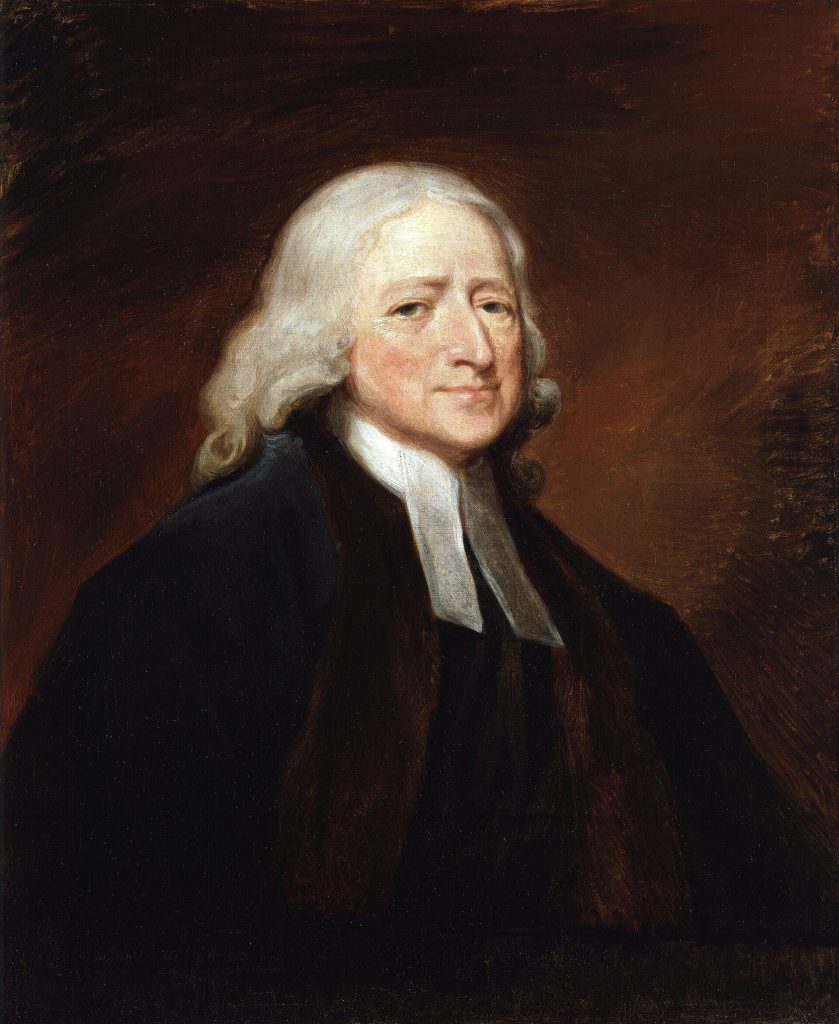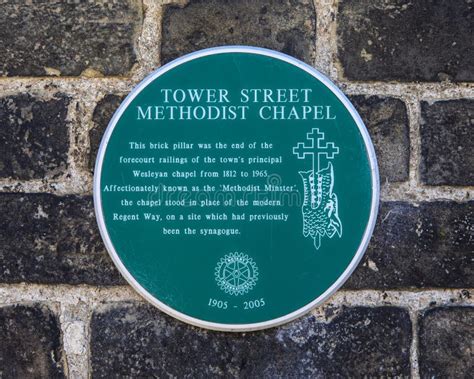John Wesley: Travels to King’s Lynn Near The End
At the age of 87, only three months before his death, a reluctant revolutionary made the difficult journey through the winter cold from Norwich to Lynn. On his final visit on 19 November, 1790, he could see that the town which he had first visited 20 years previously was now very receptive to his message.
“The wind with mistling rain came full in our faces, and we had nothing to screen us from it; so that I was thoroughly chilled from head to foot before I came to Lynn; but I soon forgot this little inconvenience, for which the earnestness of the congregation made me large amends.” John Wesley’s Journal

It must have been very encouraging for him to know that as he approached the end of his life, there was tangible evidence in King’s Lynn that his message was catching hold and that his life’s work was being well established.
“In the evening all the clergymen in the town, except one who was lame, was present at the preaching. They are all prejudiced in favour of Methodists, as are indeed most of the townsmen, who gave a fair proof by contributing so much to our Sunday schools, so that there is near twenty pounds in hand.” John Wesley’s Journal
John Wesley: The Beginning
John Wesley was born in Epworth on 17 June, 1703. By the time he was ordained a priest in 1728 there was little in this Oxford Educated minister to hint that he would threaten the religious establishment and be welcomed and listened to by many people from all classes. However, right from the beginning he was well organised and his faith had a strong social dimension.
His initial religion was conformist, sincere, and practical. He formed a Holy Club at Oxford where members studied and prayed, but members also visited prisoners and taught them to read and attempted to find employment for them. The club members extended their activities to visiting workhouses and the poor, and to distributing food, clothes, medicine, and books. They also ran a school.
The group were derisively called Methodists because of their emphasis on methodical study and devotion.
After an unsuccessful two years attempting to minister to the colonists in Georgia, North America, Wesley returned to London. On May 24, 1738, he attended a transformative meeting in Aldersgate Street with some Moravian Christians. Wesley had a religious experience as he encountered a new understanding of Paul’s doctrine of justification by faith. He came to believe that it was faith, not works, that secured his salvation. He no longer did things in order to be saved but did things because of the security of his faith.
John Wesley: The Difficulties
From this point onward, at the age of 35, Wesley viewed his life’s mission to be one of proclaiming the good news of salvation by faith, which he would do whenever a pulpit was offered to him. However John Wesley soon became a problem for the religious establishment for at least three reasons. Ironically none of those reasons were really to do with religious doctrine, but everything to do with custom and practice.
First, he was passionate and enthusiastic in his preaching and zealous in seeking to persuade people to listen to, and believe in, his message. It is probably fair to say that the Church of England in the eighteenth century was not known for its emotional commitment to its doctrine or for its zealous proclamation of its message. Such evangelical zeal was not the norm.
Secondly, wherever he went, he followed the Moravian Christian model of encouraging new converts to meet in small groups to study and to be accountable to each other for their behaviour. Although in 1738 Wesley introduced rules to prevent abuse, such groups would be a threat to many parish priests. The church and the ordained priest were less important than usual, if important at all.

Thirdly, Wesley found himself having to literally step outside of traditional boxes. Many bishops and priests refused to give him permission to preach in their churches. So, encouraged by his friend George Whitfield, Wesley began to preach in the open air or in houses or halls – wherever he could gather people to listen to him. This was an Anglican minister being forced to step outside of churches.
John Wesley’s Visits To King’s Lynn
It has been claimed by Hillen that a couple from the North East were ultimately responsible for bringing Methodism to King’s Lynn. Mr & Mrs Crawford were a couple from Newcastle who had heard Wesley preach when they lived there. They moved into a house in Tower Street in King’s Lynn near the Jewish synagogue. (All trace of the house and synagogue have now disappeared under Regency Way where it crosses Tower Street.) In 1771 the Crawfords wrote to Wesley asking him to send his disciples to “this benighted town”. Wesley was happy to comply and visited the town at least six times in total during the next twenty years.
On 6 November, 1771 he rode through rain from Norwich and preached in a house in New Conduit Street towards the east end. Wesley reports that the people received his words with joy. On the following day he visited some prisoners in the town who were glad to receive his exhortation. In the evening he preached again in the house in New Conduit Street and several people had to be turned away.
Whenever Wesley visited Norwich he made a point of travelling to Lynn. We know that in addition to the visit in 1771, he visited the town again in 1777, 1779, 1783, 1785, 1790.
Methodism: The King’s Lynn Buildings
As the number of converts to Methodism grew there was a need for a suitable building. The first chapel was in the south of North Clough Lane, close to where the swimming pool is today. It was built in 1788 and the congregation had outgrown it by 1813. By this date the Methodists were splitting into various subgroups.
The Wesleyan Methodists built three chapels in the town, reflecting their popularity and growth. Unfortunately all three have been demolished. One was in Pilot Street, North End; one was in London Road South on the Corner of Everard Street (now flats).
The main Wesleyan Chapel was built on land purchased on the site of where it all started – where the Jewish Synagogue and the Crawford’s house was in Tower Street (now where Regency Way crosses Tower Street). The chapel cost £4,500 and was designed and built by Samuel Newman. When it was opened in 1813 Mrs Crawford was still alive aged 99. At the time she was probably the oldest Methodist in the world. A new organ was installed in 1876. The chapel was closed in 1943.

The first of the breakaway groups was the New Methodist Connexion. They built a chapel in Railway Road. Although the building was closed in 1932, part of it can be seen today as a garage just past the entrance to the bus station (26a Railway Road).
In 1807 The Primitive Methodists (“primitive” as in “following first principles”) separated from the Wesleyans and the New Methodist Connexion. They built a chapel, also on the east side of London Road, in 1826. (At the time of writing the author has been unable to identify the site of this chapel – possibly at 124 London Road.)
In 1834 the Wesleyan Methodist Association built a chapel on the north side of North Clough Lane.
Highgate Methodist Chapel was built in 1883.
The original Primitive Methodists’ chapel soon became too small for the congregation and land was purchased to build a new one across the road near the top of The Walks . There was initial opposition from the Town Council when it was known that the finest site in the town had been secured for a “Ranter’s Chapel.” This site has an interesting history. It originally overlapped the land where St James’ Church had been started in 1135. The church had been converted into a workhouse in 1580. The workhouse was finally closed in 1855.

Photo © James Rye 2023
It is appropriate that the new chapel (opened in 1859) has a clock facing the road. The workhouse also had a large clock facing the road until it fell, killing both the clockmaker who had come to repair it and one of the workhouse residents (see The Clock That Killed). In the past this Methodist building has been referred to as the Clock Chapel.
The Victorian architect, A.J.Hillam, gave the building cement surrounded lancet windows punctuating a yellow brick, Dutch-styled gable. After various extensions in the C20th Century (new kitchen and school room) and an organ refurbishment in 2010, London Road Methodist Chapel is now the largest Methodist meeting place in the town.
© James Rye 2023
Sources
- Britannica https://www.britannica.com/biography/John-Wesley
- Hillen, H.J. (1907) History of the Borough of King’s Lynn, Vol.2, EP Publishing Ltd
- Journal of John Wesley http://www.ntslibrary.com/PDF%20Books/Wesley_Journal.pdf
- Leaflet produced by the King’s Lynn Methodist Circuit Archivist, the late Brian Hart
- My Primitive Methodists https://www.myprimitivemethodists.org.uk/content/chapels/norfolk-2/h-k/kings_lynn_london_road_primitive_methodist_chapels
- Norfolk Churches http://www.norfolkchurches.co.uk/lynnstjames/lynnmethodist.htm
- Personal Correspondence with Local Historians and King’s Lynn Town Guides, Paul Allford and Kim Leonard
See also:
Book a Walk with a Trained and Qualified King’s Lynn Guide

[…] See also: Reluctant Revolutionary Enriches Lynn […]
[…] See also: Reluctant Revolutionary Enriches Town […]
[…] James was started in 1135 by Bishop Everard on the site roughly behind where the nineteenth century London Road Methodist Chapel now stands. (St James ceased being a religious building in 1548 and it collapsed in 1854). And St […]